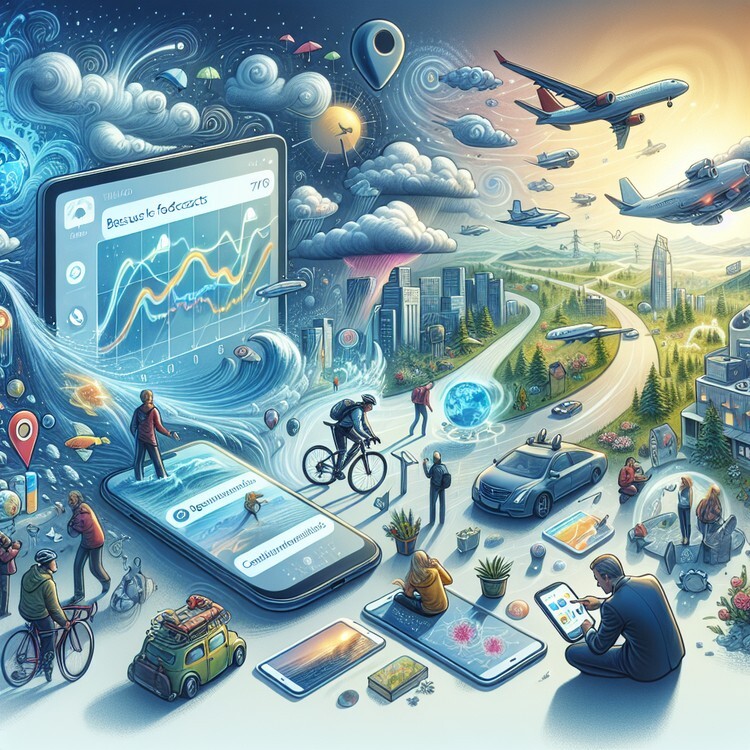Political action in Brazil and Colombia has led to a significant decline in tree loss in tropical forests, according to a new analysis. The Brazilian Amazon saw a 39% reduction in tree losses, while Colombia experienced a nearly 50% decline in primary forest loss. These countries have prioritized the environment under new leadership, resulting in positive outcomes. However, the gains made in Brazil and Colombia were offset by increased tree felling and fires in Bolivia, Laos, and Nicaragua. Overall, global tree losses increased by 25%, largely due to forest fires in Canada.
The wildfires in Canada had a significant impact on global tree cover loss, driving a fivefold increase in tree losses compared to the previous year. However, researchers argue that intentional clearing of mature rainforests in tropical regions is the most critical factor in addressing climate change. These primary forests store large amounts of carbon, which is crucial for limiting global temperature rise. Tropical regions have been the primary focus of human-driven deforestation over the past five decades.
In 2023, the tropics lost 3.7 million hectares of forest, equivalent to 10 football fields per minute. However, the losses would have been much higher if not for the efforts of Brazil and Colombia. President Luiz Inacio Lula da Silva’s government in Brazil has seen a 36% reduction in primary forest losses compared to the previous year. Similarly, President Gustavo Petro Urrego’s actions in Colombia have led to a nearly 50% decline in primary forest loss.
While the reductions in tree losses in Brazil and Colombia are significant, they still remain higher than in the early 2010s. Not all regions in Brazil saw reductions, with the Cerrado experiencing a 6% increase in tree loss. Bolivia, Laos, and Nicaragua also saw notable increases in tree losses, mainly due to fires and agricultural expansion. Indonesia saw an increase in losses, although the rate remains historically low compared to a decade ago.
Overall, the analysis highlights the mixed picture of tree loss globally. The world has just six years left to fulfill the promise made at COP26 in 2021 to halt deforestation. Researchers emphasize the need for urgent action to address the climate and nature crises, as the high rates of deforestation indicate that progress is off track.
Original news source: Dramatic drop in logging in key Amazon countries (BBC)
🎧 Listen:
Slow
Normal
Fast
📖 Vocabulary:
| 1 | deforestation | The process of clearing or removing forests or stands of trees |
| 2 | hectares | A metric unit of area equal to 10,000 square meters or 2.47 acres |
| 3 | reduction | The act of making something smaller or less in amount, degree, or size |
| 4 | tropical | Relating to or characteristic of the tropics, the equatorial region |
| 5 | carbon | The chemical element that is a key component of all known life on earth, often linked with climate change discussions |
| 6 | intentional | Done on purpose or deliberately |
| 7 | critical | Extremely important or crucial, especially in the context of a particular situation or sphere |
| 8 | mature | Fully developed or grown, often used in reference to living organisms |
| 9 | expansion | The process of increasing in size, number, or extent |
| 10 | equivalent | Having the same value, amount, or effect as something else |
| 11 | offset | To counterbalance, make up for, or compensate for something |
| 12 | prioritize | To treat something as more important than other things |
| 13 | significant | Large enough to be noticed or have an effect |
| 14 | intentional | Done on purpose or deliberately (intentionally repeated for correction) |
| 15 | urgent | Requiring immediate attention or action |
Group or Classroom Activities
Warm-up Activities:
– News Summary
Instructions: Have students read the article individually or in pairs. Instruct them to write a summary of the main points of the article in their own words. Afterward, have students share their summaries with the class and discuss any differences or similarities.
– Opinion Poll
Instructions: Divide the class into small groups. Assign each group a country mentioned in the article (Brazil, Colombia, Bolivia, Laos, Nicaragua, or Canada). Instruct each group to discuss and come up with their opinions on the actions taken by the government of their assigned country to reduce tree loss. Afterward, have each group present their opinions to the class and facilitate a class discussion.
– Vocabulary Pictionary
Instructions: Provide students with a list of key vocabulary words from the article (e.g., tree loss, primary forest, deforestation, climate change, etc.). Divide the class into pairs or small groups. Instruct each group to choose a word from the list and draw a picture that represents the word. The other groups must guess the word based on the drawing. Encourage students to explain the meaning of the word after it has been guessed.
– Pros and Cons
Instructions: Divide the class into two groups. Assign one group to discuss the positive aspects of the actions taken by Brazil and Colombia to reduce tree loss, and assign the other group to discuss the negative aspects. Give each group time to brainstorm their arguments and then have a debate-style discussion, with each group presenting their points and responding to the opposing group’s arguments.
– Future Predictions
Instructions: Instruct students to imagine they are environmental activists in the year 2030. Ask them to write a short paragraph predicting the state of global tree loss and deforestation based on the current trends described in the article. Have students share their predictions with the class and discuss any common themes or differences in their predictions.
🤔 Comprehension Questions:
1. What has led to a decline in tree loss in Brazil and Colombia?
2. What were the reductions in tree losses in Brazil and Colombia?
3. Which countries experienced increased tree felling and fires?
4. What was the overall global increase in tree losses?
5. What is the most critical factor in addressing climate change, according to researchers?
6. How much forest did the tropics lose in 2023?
7. What actions have the governments of Brazil and Colombia taken to reduce tree loss?
8. How do the reductions in tree losses in Brazil and Colombia compare to previous years?
Go to answers ⇩
🎧✍️ Listen and Fill in the Gaps:
Political action in Brazil and Colombia has led to a (1)______ decline in tree loss in tropical forests, according to a new analysis. The Brazilian Amazon saw a 39% reduction in tree losses, while Colombia experienced a nearly 50% decline in primary forest loss. These countries have prioritized the environment under new leadership, (2)______ in positive outcomes. However, the (3)______ made in Brazil and Colombia were offset by increased tree felling and (4)______ in Bolivia, Laos, and Nicaragua. Overall, global tree losses increased by 25%, largely due to forest fires in Canada.
The wildfires in Canada had a significant (5)______ on global tree (6)______ loss, driving a fivefold increase in tree losses (7)______ to the previous year. However, researchers argue that intentional clearing of mature rainforests in tropical regions is the most critical factor in addressing climate change. These primary forests store large amounts of (8)______, which is crucial for limiting global temperature rise. Tropical regions have been the primary focus of human-driven deforestation over the past five decades.
In 2023, the tropics lost 3.7 million hectares of forest, equivalent to 10 football fields per minute. However, the losses would have been much higher if not for the efforts of (9)______ and Colombia. President Luiz (10)______ Lula da Silva’s government in Brazil has seen a 36% reduction in primary forest losses compared to the previous year. Similarly, President Gustavo (11)______ Urrego’s actions in Colombia have led to a nearly 50% decline in primary forest loss.
While the (12)______ in tree losses in Brazil and Colombia are significant, they still remain higher than in the early 2010s. Not all regions in Brazil saw reductions, with the Cerrado experiencing a 6% increase in tree loss. Bolivia, Laos, and (13)______ also saw notable (14)______ in tree losses, mainly due to fires and (15)______ expansion. Indonesia saw an increase in losses, although the rate remains historically low compared to a decade ago.
Overall, the analysis highlights the mixed picture of tree loss globally. The world has just six years left to fulfill the promise made at COP26 in 2021 to halt deforestation. (16)______ emphasize the need for urgent action to address the climate and nature crises, as the high rates of deforestation indicate that progress is off track.
Go to answers ⇩
💬 Discussion Questions:
Students can ask a partner these questions, or discuss them as a group.
1. What is the significance of political action in reducing tree loss in Brazil and Colombia?
2. How would you feel if your country prioritized the environment and saw a significant reduction in tree losses?
3. Do you think intentional clearing of mature rainforests is the most critical factor in addressing climate change? Why or why not?
4. Why do you think tree losses increased globally despite the reductions in Brazil and Colombia?
5. Do you think the wildfires in Canada had a significant impact on global tree cover loss? Why or why not?
6. How do primary forests store large amounts of carbon and why is it crucial for limiting global temperature rise?
7. What actions have President Luiz Inacio Lula da Silva’s government and President Gustavo Petro Urrego taken to reduce primary forest loss in Brazil and Colombia?
8. How do the reductions in tree losses in Brazil and Colombia compare to the early 2010s?
9. Why do you think not all regions in Brazil saw reductions in tree losses?
10. What factors contributed to the notable increases in tree losses in Bolivia, Laos, and Nicaragua?
11. How does the increase in tree losses in Indonesia compare to a decade ago?
12. Why is it important for the world to fulfill the promise made at COP26 to halt deforestation?
13. How do the high rates of deforestation indicate that progress is off track in addressing the climate and nature crises?
14. What urgent actions do you think should be taken to address the climate and nature crises?
15. How do you personally feel about the mixed picture of tree loss globally?
Individual Activities
📖💭 Vocabulary Meanings:
Match each word to its meaning.
Words:
1. deforestation
2. hectares
3. reduction
4. tropical
5. carbon
6. intentional
7. critical
8. mature
9. expansion
10. equivalent
11. offset
12. prioritize
13. significant
14. intentional
15. urgent
Meanings:
(A) Having the same value, amount, or effect as something else
(B) To counterbalance, make up for, or compensate for something
(C) Requiring immediate attention or action
(D) Large enough to be noticed or have an effect
(E) Relating to or characteristic of the tropics, the equatorial region
(F) Extremely important or crucial, especially in the context of a particular situation or sphere
(G) A metric unit of area equal to 10,000 square meters or 2.47 acres
(H) The process of clearing or removing forests or stands of trees
(I) Done on purpose or deliberately (intentionally repeated for correction)
(J) The chemical element that is a key component of all known life on earth, often linked with climate change discussions
(K) To treat something as more important than other things
(L) The act of making something smaller or less in amount, degree, or size
(M) Fully developed or grown, often used in reference to living organisms
(N) The process of increasing in size, number, or extent
(O) Done on purpose or deliberately
Go to answers ⇩
🔡 Multiple Choice Questions:
1. What was the percentage reduction in tree losses in the Brazilian Amazon?
(a) 25%
(b) 50%
(c) 39%
(d) 36%
2. Which country experienced a nearly 50% decline in primary forest loss?
(a) Bolivia
(b) Colombia
(c) Laos
(d) Nicaragua
3. What was the main factor driving the increase in global tree losses?
(a) Forest fires in Canada
(b) Intentional clearing of rainforests
(c) Agricultural expansion
(d) Political action in Brazil and Colombia
4. How many hectares of forest did the tropics lose in 2023?
(a) 10 million
(b) 1 million
(c) 5 million
(d) 3.7 million
5. Which country saw a 36% reduction in primary forest losses compared to the previous year?
(a) Colombia
(b) Bolivia
(c) Brazil
(d) Laos
6. Which region in Brazil saw an increase in tree loss?
(a) Cerrado
(b) Amazon
(c) Pantanal
(d) Atlantic Forest
7. Which country saw an increase in tree losses, but at a historically low rate compared to a decade ago?
(a) Canada
(b) Brazil
(c) Colombia
(d) Indonesia
8. How many years does the world have left to fulfill the promise made at COP26 to halt deforestation?
(a) 10 years
(b) 6 years
(c) 3 years
(d) 20 years
Go to answers ⇩
🕵️ True or False Questions:
1. Colombia saw a significant increase in primary forest loss.
2. Unintentional protection of mature rainforests in tropical regions is the most critical factor in addressing climate change.
3. Political action in Brazil and Colombia has resulted in a significant decrease in tree loss in tropical forests.
4. Global tree losses decreased by 25%, primarily due to forest fires in Canada.
5. Increased tree planting and fire prevention in Bolivia, Laos, and Nicaragua offset the gains made in Brazil and Colombia.
6. The world has six years left to fulfill the promise made at COP26 in 2021 to halt deforestation.
7. The Brazilian Amazon experienced a 39% reduction in tree losses.
8. Tropical regions have been the primary focus of human-driven deforestation over the past five decades.
Go to answers ⇩
📝 Write a Summary:
Write a summary of this news article in two sentences.
Check your writing now with the best free AI for English writing!
Writing Questions:
Answer the following questions. Write as much as you can for each answer.
Check your answers with our free English writing assistant!
1. What countries have seen a significant decline in tree loss in tropical forests?
2. What were the main factors that led to the reductions in tree losses in Brazil and Colombia?
3. What were the main factors that offset the gains made in Brazil and Colombia?
4. What is the most critical factor in addressing climate change, according to researchers?
5. What is the timeline for fulfilling the promise made at COP26 to halt deforestation?
✅ Answers
🤔✅ Comprehension Question Answers:
1. Political action in Brazil and Colombia has led to a decline in tree loss.
2. The Brazilian Amazon saw a 39% reduction in tree losses, while Colombia experienced a nearly 50% decline in primary forest loss.
3. Bolivia, Laos, and Nicaragua experienced increased tree felling and fires.
4. Overall, global tree losses increased by 25%.
5. According to researchers, the intentional clearing of mature rainforests in tropical regions is the most critical factor in addressing climate change.
6. The tropics lost 3.7 million hectares of forest in 2023.
7. The government of Brazil, under President Luiz Inacio Lula da Silva, has seen a 36% reduction in primary forest losses. Similarly, the actions of President Gustavo Petro Urrego in Colombia have led to a nearly 50% decline in primary forest loss.
8. While the reductions in tree losses in Brazil and Colombia are significant, they still remain higher than in the early 2010s.
Go back to questions ⇧
🎧✍️✅ Listen and Fill in the Gaps Answers:
(1) significant
(2) resulting
(3) gains
(4) fires
(5) impact
(6) cover
(7) compared
(8) carbon
(9) Brazil
(10) Inacio
(11) Petro
(12) reductions
(13) Nicaragua
(14) increases
(15) agricultural
(16) Researchers
Go back to questions ⇧
📖💭✅ Vocabulary Meanings Answers:
1. deforestation
Answer: (H) The process of clearing or removing forests or stands of trees
2. hectares
Answer: (G) A metric unit of area equal to 10,000 square meters or 2.47 acres
3. reduction
Answer: (L) The act of making something smaller or less in amount, degree, or size
4. tropical
Answer: (E) Relating to or characteristic of the tropics, the equatorial region
5. carbon
Answer: (J) The chemical element that is a key component of all known life on earth, often linked with climate change discussions
6. intentional
Answer: (O) Done on purpose or deliberately
7. critical
Answer: (F) Extremely important or crucial, especially in the context of a particular situation or sphere
8. mature
Answer: (M) Fully developed or grown, often used in reference to living organisms
9. expansion
Answer: (N) The process of increasing in size, number, or extent
10. equivalent
Answer: (A) Having the same value, amount, or effect as something else
11. offset
Answer: (B) To counterbalance, make up for, or compensate for something
12. prioritize
Answer: (K) To treat something as more important than other things
13. significant
Answer: (D) Large enough to be noticed or have an effect
14. intentional
Answer: (I) Done on purpose or deliberately (intentionally repeated for correction)
15. urgent
Answer: (C) Requiring immediate attention or action
Go back to questions ⇧
🔡✅ Multiple Choice Answers:
1. What was the percentage reduction in tree losses in the Brazilian Amazon?
Answer: (c) 39%
2. Which country experienced a nearly 50% decline in primary forest loss?
Answer: (b) Colombia
3. What was the main factor driving the increase in global tree losses?
Answer: (a) Forest fires in Canada
4. How many hectares of forest did the tropics lose in 2023?
Answer: (d) 3.7 million
5. Which country saw a 36% reduction in primary forest losses compared to the previous year?
Answer: (c) Brazil
6. Which region in Brazil saw an increase in tree loss?
Answer: (a) Cerrado
7. Which country saw an increase in tree losses, but at a historically low rate compared to a decade ago?
Answer: (d) Indonesia
8. How many years does the world have left to fulfill the promise made at COP26 to halt deforestation?
Answer: (b) 6 years
Go back to questions ⇧
🕵️✅ True or False Answers:
1. Colombia saw a significant increase in primary forest loss. (Answer: False)
2. Unintentional protection of mature rainforests in tropical regions is the most critical factor in addressing climate change. (Answer: False)
3. Political action in Brazil and Colombia has resulted in a significant decrease in tree loss in tropical forests. (Answer: True)
4. Global tree losses decreased by 25%, primarily due to forest fires in Canada. (Answer: False)
5. Increased tree planting and fire prevention in Bolivia, Laos, and Nicaragua offset the gains made in Brazil and Colombia. (Answer: False)
6. The world has six years left to fulfill the promise made at COP26 in 2021 to halt deforestation. (Answer: True)
7. The Brazilian Amazon experienced a 39% reduction in tree losses. (Answer: True)
8. Tropical regions have been the primary focus of human-driven deforestation over the past five decades. (Answer: True)
Go back to questions ⇧













